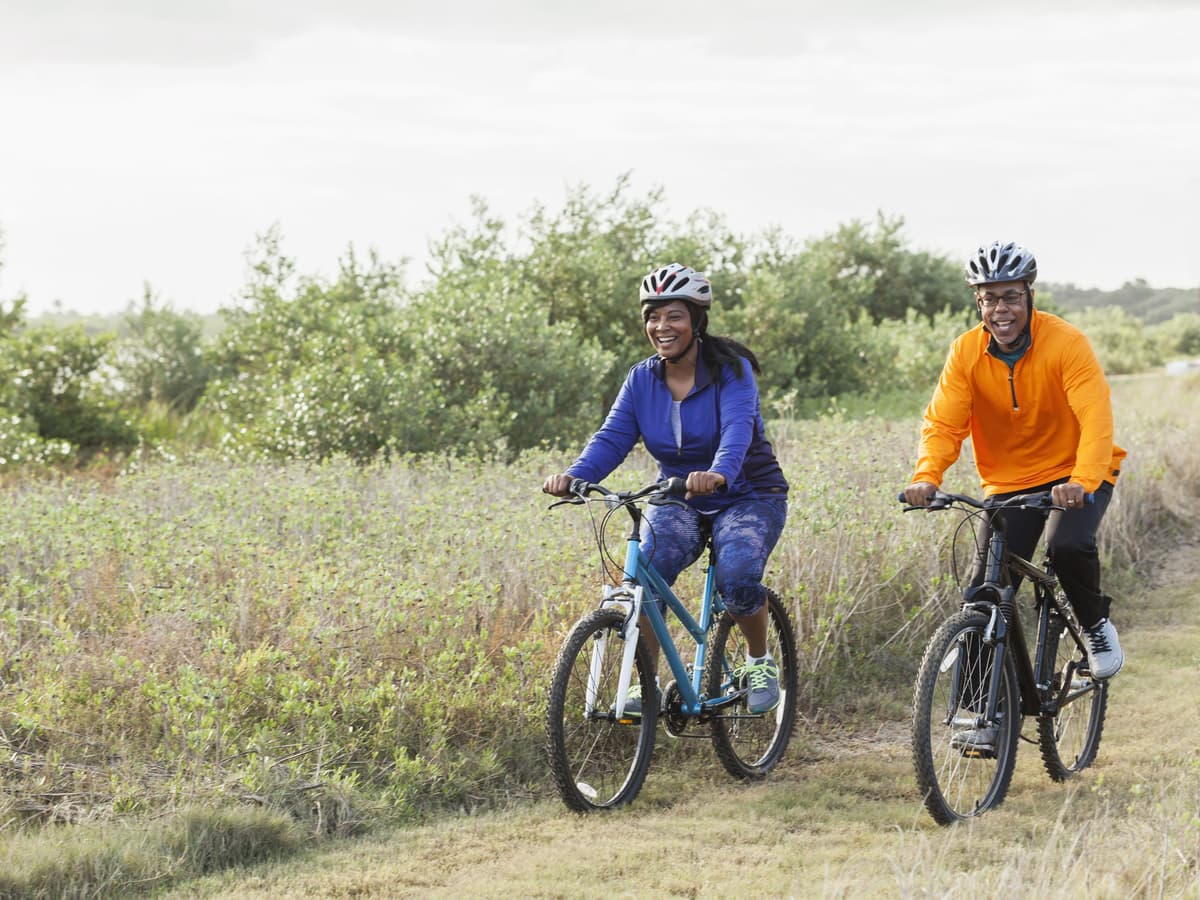
7 Tips for Learning to Ride a Bike as an Adult
Thousands of adults don’t know how to ride a bike, and 51% of Americans admit to never riding a bike even if they know how.
If you never learned to ride a bicycle as a kid, you might be missing out on a fun way to exercise, commute, and enjoy your community. Imagine yourself sailing along the sidewalk, feeling a refreshing breeze on your cheeks, curving corners with ease, and zipping down city streets toward your destination. Sounds great, right? We can help get you there with these tips for learning to ride a bike as an adult.
Why Learn to Ride a Bike?
There are endless benefits to regular bicycle riding.
- It’s good for you. Cycling is a low-impact workout that builds muscle, increases stamina, and improves overall fitness. Regular physical exercise can help prevent things like heart disease, obesity, and cancer, but it can do wonders for your mental health, too.
- It’s good for the planet. By getting places by bicycle rather than a car, you’re helping to cut down on the harmful emissions emitted from vehicles. In fact, according to UCLA transportation, “moderate increases in bicycle use each year could save an estimated 6 to 14 million tons of CO2.”
- It’s good for your wallet. Less driving means fewer trips to the gas station, and with average gas prices hitting $4.50/gallon and higher, less driving could help you save money. Biking is also a fun and free activity you can take up any time. There’s no ticket to buy, no big investment needed to get started, and no hidden fees to enjoy a cruise around the block.
Tips for How to Ride a Bike for Adults
1. Pick a safe location and wear the proper gear.
The ideal place to learn to ride a bike is an open space that is flat, smooth, and relatively deserted, like an empty parking lot or basketball court. All cyclists should wear properly fitting bike helmets, and that’s never more important than when you’re learning. If you really want to be safe, there’s no shame in wearing elbow and knee pads, too!
2. Get a feel for your bike.
Take a few minutes just to orient yourself with your bicycle. Practice getting on and off the bike safely. Squeeze the hand brakes a few times while stationary. Then squeeze the tires to make sure they are fully inflated. Take a seat and make sure it is comfortable. The more familiar you are with your bike, the smoother things will go.
3. Adjust your bike seat to the proper height.
Adjust your bike seat to the proper height so that your feet can comfortably touch the ground on either side. You’ll want to keep the bike seat relatively low as you learn to ride. Bring it to a height where your feet can easily rest on the ground when you’re perched on the seat. Then, try walking while straddling the bike. Use your feet to pick up speed. You may want to remove the pedals altogether while you master this step.
4. Practice coasting on your bike on a slight incline.
As you get comfortable walking while straddling the bike, find a spot where you can pick up a little bit of speed, ideally with an incline. Practice coasting on your bike, lifting both feet for more extended periods as you naturally pick up speed. Don’t pedal yet – just get a feel for having both feet off the ground as your bike moves.
5. Keep your head up and look ahead.
Through every stage, from walking to gliding to pedaling, your body should be upright, and you should be looking forward. New riders often want to look at their bike, feet, or the ground, but doing so can throw off your balance and make learning even harder. Keep your eyes up!
6. Start pedaling.
Begin with one pedal up high in the 1- or 2- o’clock position. Starting with the pedal up high will give you the momentum you need – the slower your bike moves, the harder it will be to balance. As you put your foot onto this pedal and push down, your bike will begin to move. As you look ahead, bring your second foot onto the other pedal. Getting both feet on the pedals will take a few tries, and wobbling (and even falling) is totally normal. Slowly, you will build muscle memory and get a feel for balancing and pedaling.
7. Practice steering and turning.
After you’re comfortable pedaling and have gotten better at balancing on your bike, it is time to practice steering and turning. Practice doing wide circles and figure eights, making them bigger and smaller as you learn to make wide and sharp turns. Once you have this part figured out, the world is your playground to explore!
8. Upgrade to your perfect bike.
Once you’ve learned to ride a bike and entered the world of cycling, you might be surprised by all the different types of bikes! Rent-A-Center is your destination for all things biking, including indoor exercise bikes to boost confidence and gain stamina or electric bikes for cyclists who want to relax and enjoy the ride. Check out your local Rent-A-Center’s latest deals on indoor bikes, foldable bikes, electric bikes, and more – all with flexible payment plans.